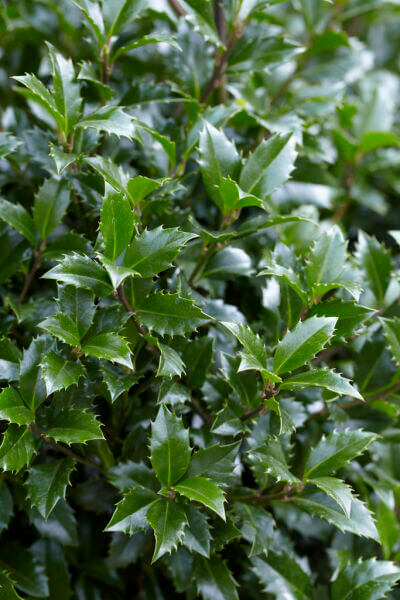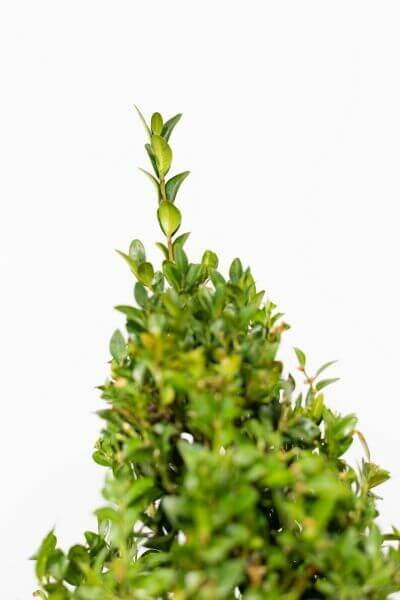Hedge Plants For Wildlife Corridors
Hedge Plants For Wildlife Corridors
Blog Article
Hedge Plants For Creating Shade
Enhance your garden's attraction with lavish hedge ranges such as Yew (Taxus), Thuja, Laurel, Photinia, and Bamboo, celebrated for their structural stability and environmental benefits.
Yew and Thuja offer evergreen coverage and winter season strength, while Laurel uses fast development and broad, aromatic leaves.
Photinia includes seasonal beauty with its vibrant red foliage, and Bamboo lends a low-maintenance, tranquil ambiance.
These hedges enhance air quality, reduce sound, and create tranquil, personal areas.
Appropriate planting, spacing, and upkeep guarantee vigorous development and eco-friendly consistency.
Check out how these rich ranges can elevate your garden's charm and wellness.
Secret Takeaways
Transform Your Garden With Lush Hedge Ranges
- Select Yew for its dense, evergreen growth and unparalleled longevity.
- Select Laurel for its quick development and broad leaves, making sure fast personal privacy.
- Choose Photinia for its dynamic seasonal foliage, which turns a striking dark red.
- Make use of Bamboo for a low-maintenance, winter-hardy hedge with visual appeal.
- Area plants 2-3 per meter and prune regularly for optimal development and health.
Popular Hedge Plants
When transforming a garden with rich hedge ranges, it's vital to consider popular hedge plants such as Yew, Thuja, Laurel, and Photinia due to their unique characteristics and benefits.
Yew (Taxus) is highly esteemed for its longevity and thick, green development, making it a prime option for sustaining landscapes.
Thuja is kept in mind for its evergreen foliage and robust winter season strength.
Photinia adds seasonal vibrancy with red leaves that darken with time, producing vibrant visual appeal.
Laurel offers quick growth and fragrant, broad leaves, perfect for fast personal privacy.
In Addition, Bamboo is an exceptional choice for ambiance, offering a low-maintenance, winter-hardy choice that improves the garden's aesthetic with its stylish, swaying walking sticks.
These selections accommodate a variety of horticultural needs and choices.
Benefits of Garden Hedges
Garden hedges use a plethora of advantages, making them a valuable addition to any landscape. These natural barriers are cost-effective to carry out and offer significant wind defense, improving air circulation and adding to noise reduction. The thick foliage of hedges like Thuja and Beech guarantees privacy by blocking visibility, developing a peaceful and remote environment.
Hedges also play a vital role in microclimate guideline, providing a steady environment that cultivates plant growth and minimizes temperature level fluctuations. Their elaborate leaf structures filter toxins, improving air quality and adding to a healthier garden environment.
Furthermore, hedges master noise reduction, absorbing and deflecting acoustic waves to lower ambient noise levels. This dual performance of supplying both visual and acoustic personal privacy boosts the general tranquility and aesthetic appeal of any garden.
Planting and Upkeep Tips
For a successful hedge, careful preparation of the planting location is vital. Guarantee the soil has correct pH and drain to support strong root development.
Space the plants appropriately for the selected types. Water the hedge regularly throughout its preliminary development stage, changing as needed with seasonal modifications.
Implement a organized bug control and illness prevention strategy, using organic or chemical treatments when necessary. Regularly check for aphids, termites, and fungal infections.
Apply mulch to keep wetness and suppress weeds. Seasonal pruning promotes thick growth and air circulation, important for plant health.
Following these standards will assist you cultivate a vibrant, well-kept hedge that enhances the beauty of your garden.
Spacing and Trimming Guidelines
Spacing and Cutting Standards
Appropriate spacing and cutting are vital for cultivating healthy, aesthetically appealing hedges. Adequate spacing guarantees each plant gets adequate nutrients, light, and air flow.
Follow these guidelines for optimal hedge maintenance:
- Spacing: Position hedge plants 2-3 plants per meter to encourage robust growth.
- Pruning Techniques: Regular pruning is essential for maintaining desired hedge height and shape. Cut brand-new development in summertime and cut down older wood throughout winter.
- Seasonal Care: Change cutting approaches and schedules according to seasonal requirements to guarantee plant health.
- Hedge Height: Frequently display and trim to maintain the desired hedge height and achieve uniform visual appeals.
Adhering to these steps will ensure your hedge thrives, improving both the appeal and functionality of your garden.
Choosing the Right Hedge
Picking the Right Hedge
Choosing the proper hedge includes assessing factors such as fully grown height, foliage density, and ecological strength. Successful hedge plant selection needs understanding each species' development qualities and site-specific adaptability.
For instance, Yew (Taxus) provides outstanding longevity and thick growth, while Thuja is significant for its winter strength. Furthermore, thinking about maintenance requirements is crucial; fast-growing types like Laurel or Privet need regular cutting, whereas low-maintenance choices like Bamboo or Ivy may be more suitable for those seeking very little maintenance.
Environmental factors such as soil type, light schedule, and moisture conditions must likewise guide the choice process. This mindful approach ensures the selected hedges will grow, supplying both visual and functional benefits to the garden landscape.
Shipment and Planting Advice
To ensure your hedge plants grow, they must be provided by specialized couriers and planted quickly upon arrival.
Follow these essential steps for effective planting:
- Soil Preparation: Enrich the soil with organic matter to enhance drain and nutrient material.
- Planting Depth: Create a trench twice the width and equivalent to the depth of the root ball.
- Watering Techniques: Water thoroughly after planting, keeping the soil consistently wet but not saturated.
- Mulching: Apply a layer of mulch to keep wetness and reduce weeds.
Consumer Assistance and Service
Offered the crucial role of timely support in horticultural pursuits, our consumer assistance team is available six days a week through telephone, email, and social media to provide professional suggestions and promptly address any issues. Their dedication to quick response times ensures consumer satisfaction by resolving queries associated with plant health, ideal planting techniques, and maintenance schedules.

-------------------
Within 24 hours
This comprehensive support group, strengthened by an outstanding 9.3/ 10 customer score, highlights our dedication to enhancing the gardening experience for every single client.
Often Asked Questions
For How Long Does It Take for Hedge Plants to Establish?
Hedge plants typically need one to 3 years to end up being completely developed, with the precise duration varying by species and growing conditions.
Effective care throughout this important duration is necessary for robust development. Constant watering, watchful weed control, and proper fertilizer application are essential in promoting strong root advancement.
For instance, fast-growing types like Laurel might establish quicker, while slower-growing varieties such as Yew might take longer. Thorough maintenance speeds up the establishment process, resulting in healthy and dense hedges.
What Are the Finest Hedge Plants for Personal Privacy?
The concern of the best hedge plants for personal privacy includes examining evergreen and deciduous options.
Evergreen hedges like Thuja, Laurel, and Cypress provide year-round protection, making sure constant privacy.
In contrast, here deciduous hedges such as Beech provide seasonal privacy, shedding leaves in colder months.
Secret maintenance tips for personal privacy hedges consist of regular cutting, fertilizing in spring, and appropriate spacing-- generally 2 to 3 plants per meter.
In addition, constant watering and diligent weed removal are vital for promoting healthy, dense development.
Can Hedge Plants Draw In Wildlife to My Garden?
Yes, hedge plants can attract wildlife to your garden by providing essential advantages like shelter, food, and nesting sites, therefore improving regional biodiversity. Yew, holly, and laurel are excellent for drawing in birds, while ivy supports a variety of bugs.
However, it is very important to note that there are some disadvantages, such as increased upkeep to handle insects and routine upkeep. Thoroughly selecting and preserving hedge ranges can help stabilize these advantages and drawbacks, eventually fostering a sustainable and vibrant community in your garden.
Exist Any Blooming Hedge Plants Available?
Yes, there are flowering hedge plants readily available that can improve the appeal of your garden.
For instance, Elaeagnus, likewise called Olive Willow, produces fragrant white flowers in the fall, adding a touch of sophistication.
Photinia, another popular option, showcases vibrant red leaves that develop into an abundant green, developing a dynamic visual result throughout the seasons.
To ensure these plants flourish, it's necessary to practice proper pruning techniques and seasonal maintenance, such as cutting brand-new growth in the summer and cutting back in the winter.
These steps will assist keep the health and aesthetic appeal of your blooming hedges.
How Do I Avoid Pests in My Hedge Plants?
To prevent bugs in hedge plants, utilize natural bug control methods and maintain proper hedge care. Introduce advantageous bugs like ladybugs, which victimize damaging bugs, to develop a well balanced ecosystem.
Regularly inspect your hedges for indications of problem and immediately remove any affected parts to prevent the spread. Make sure the health of your hedges by using well balanced fertilizers and supplying appropriate water.
Make use of mulching to maintain soil wetness and appropriate spacing to decrease plant stress and promote robust growth. These practices collectively assist in minimizing bug concerns and preserving a healthy hedge.
Conclusion
In essence, selecting the right hedge varieties such as Yew, Thuja, and Laurel can change any garden into a relaxing haven. These plants provide year-round plant, boost aesthetic appeal, and offer useful benefits like noise decrease and wind security.
Proper planting strategies, precise spacing, constant watering, and seasonal trimming are vital for optimum growth.
Reputable delivery services and skilled customer assistance guarantee a smooth experience from purchase to planting, making it easier than ever to elevate your outside space.
Garden hedges use a wide variety of benefits, making them an important addition to any landscape. These natural barriers are affordable to execute and provide substantial wind security, boosting air flow and contributing to sound reduction. The thick foliage of hedges like Thuja and Beech ensures personal privacy by obstructing presence, producing a secluded and serene environment.

Pruning Strategies: Routine pruning is vital for preserving desired hedge height and shape. Cut brand-new growth in summer season and cut back older wood during winter.
Report this page